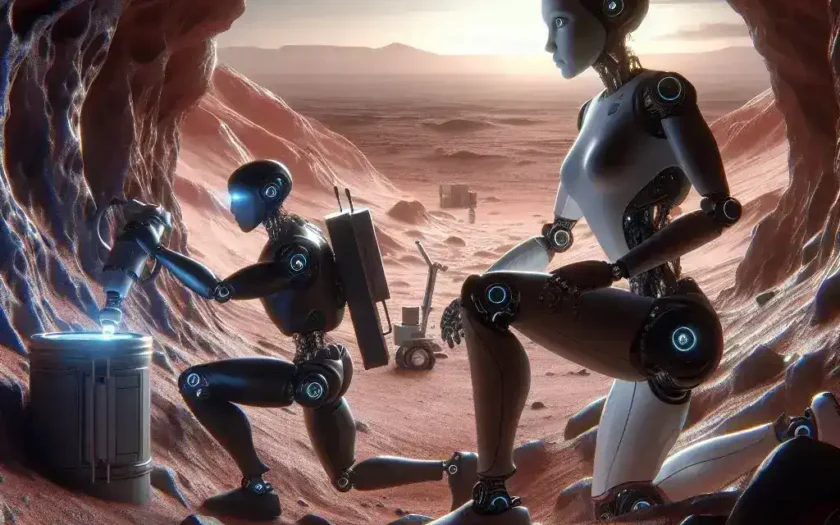Introduction
The quest for extraterrestrial life has captured the imagination of humanity for centuries. With Mars as our closest neighbor, scientists have turned their attention to this enigmatic planet, particularly its caves. Recent advancements in artificial intelligence (AI) and robotics are poised to revolutionize our exploration efforts, leading to a new era of discovery in the search for microbial life on Mars.
The Importance of Caves on Mars
Caves on Mars present a unique environment that may preserve signs of microbial life. These subterranean structures offer shelter from harsh surface conditions, including radiation, extreme temperatures, and dust storms. By exploring these caves, AI robots could uncover vital clues about the planet’s past and the potential for life beyond Earth.
Why Search for Microbial Life?
Microbial life, while simple, is crucial for understanding the origins of life. Finding evidence of such organisms on Mars could provide insights into how life may have begun on Earth and whether it exists elsewhere in the universe. Additionally, the discovery of microbial life on Mars could influence future human colonization efforts and our understanding of the biosphere.
AI Robotics: The Game Changer
The integration of AI into robotic platforms allows for enhanced autonomous exploration. AI robots can analyze data in real-time, make decisions without human intervention, and adapt to unforeseen challenges in the Martian landscape. This capability is essential for navigating the complexities of cave environments, where conditions can change rapidly.
Key Technologies in AI Robotics
- Machine Learning: Enables robots to learn from their surroundings and improve their exploration strategies over time.
- Computer Vision: Allows robots to interpret visual data, identifying geological features and potential signs of life.
- Sensor Technology: Advanced sensors can detect chemical signatures and environmental conditions, crucial for identifying microbial life.
Exploration Missions: A Step Forward
Several space agencies and private organizations are actively developing missions to send AI robots to Mars. These missions aim to explore caves and gather data that will provide insights into the planet’s geological history and potential for life.
Notable Missions
One of the most ambitious missions is NASA’s Mars 2020 Perseverance rover, designed to search for ancient microbial life and collect rock and soil samples. Following this, future missions may deploy specialized AI robots equipped with advanced capabilities to explore Martian caves.
Mission Objectives
- Identify locations with high potential for microbial life.
- Analyze geological formations within caves.
- Collect and transmit data back to Earth for further analysis.
Challenges of Cave Exploration
While the potential for discovery is immense, exploring caves on Mars poses significant challenges. The harsh environment, combined with the complexity of cave systems, requires robots to be equipped with advanced navigation and analysis tools.
Environmental Challenges
Martian caves can be dark, with varying temperatures and potentially hazardous gases. AI robots must be designed to operate in these conditions, ensuring safety while performing their tasks efficiently.
Technical Challenges
Developing AI robots with the ability to navigate and operate autonomously in unpredictable environments is a significant technological hurdle. Researchers are continuously working on improving algorithms and robotics to overcome these challenges.
Future Predictions: The Role of AI Robots
The future of Mars exploration looks promising with the integration of AI robots. As technology advances, we can expect more sophisticated robots capable of conducting in-depth analyses of Martian caves.
Potential Discoveries
Should these missions succeed, the implications for science and humanity could be profound:
- Discovery of ancient microbial life could reshape our understanding of life’s origins.
- Identifying chemical signatures associated with life could offer clues about the Martian ecosystem.
- Insights gained from Martian caves may inform future missions to further investigate extraterrestrial environments.
Cultural Relevance
The exploration of Mars touches on fundamental questions about our existence and place in the universe. The potential discovery of life on another planet would resonate across cultures and inspire future generations to continue exploring the cosmos.
Conclusion
AI robots exploring caves on Mars represent a groundbreaking opportunity to unravel the mysteries of our planetary neighbor. With the technological advancements in robotics and AI, we are on the brink of potentially discovering microbial life that could change our understanding of biology and existence. As we continue to innovate and push the boundaries of space exploration, the caves of Mars await to reveal their secrets, and the AI robots are ready to lead the way.

